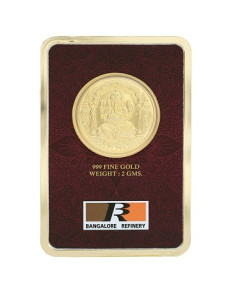Exclusive Deals & Trending Items


Muthoot Pappachan Swarnavarsham Gold BIS Hallmarked Flower Drop Earring of 3 gms in 22 KT 916 Purity Fineness
Shop NowIn 2025, investors are turning to gold as a safe choice against stock market ups and downs and rising prices. This has made gold investment options more popular than ever.
Investing in gold ETFs and mutual funds is a smart way to add gold to your portfolio. With the market getting more unpredictable, it’s wise to look at safe-haven assets like gold.
Key Takeaways
- Investing in gold can help hedge against market uncertainty and inflation.
- Gold ETFs and mutual funds offer a convenient way to gain exposure to gold.
- Diversifying your portfolio with gold can reduce risk.
- Gold prices have hit new all-time highs in 2025.
- Consider adding gold to your investment portfolio to enhance diversification.
The Role of Gold in Modern Investment Portfolios
When you think about adding to your investment mix, knowing about gold is key. Gold is often seen as a safe-haven asset. It helps protect against market ups and downs and economic troubles.


Historical Performance of Gold as an Asset Class
Gold has shown strong performance, especially when the economy is shaky or inflation is high. For example, during the 2008 crisis, gold prices went up. This shows gold’s worth in a well-rounded portfolio, making it a top pick for investing in precious metals.
Why Gold Remains Relevant in Digital Economy
Even with digital assets on the rise, gold stays important because it’s real and widely accepted. The gold fund performance has been solid, drawing in investors seeking a stable value. Adding gold to your portfolio can help balance out market swings.
In short, gold’s lasting appeal comes from its past success and ongoing importance in today’s digital world. By grasping its role, you can make smart choices about including gold in your investment plan.
Understanding Gold ETFs and Mutual Funds
Investors looking to add gold to their portfolios should know about Gold ETFs and Mutual Funds. These options let you invest in gold without owning it physically.
What Are Gold ETFs?
Gold ETFs are funds that track gold prices. They let investors buy and sell gold without physical ownership. They trade on stock exchanges like stocks.
Structure and Functioning
Gold ETFs store physical gold in vaults. Their units are backed by this gold. The structure mirrors the gold price, keeping the ETF’s NAV close to gold’s price.
Benefits for Retail Investors
Gold ETFs offer liquidity and flexibility. They can be traded all day. They also avoid the need for physical gold storage, reducing risks.


What Are Gold Mutual Funds?
Gold Mutual Funds invest in gold-related securities. This includes shares of gold mining companies or gold ETFs. They offer a broad exposure to the gold market.
Fund Management Approach
Professionals manage these funds. They decide how to allocate assets. The fund management approach aims to increase returns while reducing risk.
Suitability for Different Investor Types
Gold Mutual Funds are good for those wanting gold in a diversified portfolio. They’re great for investors who prefer a hands-off investment approach.
ETFs vs. Mutual Funds: Key Differences for Gold Investors
Choosing between gold ETFs and mutual funds depends on several key factors. These factors can greatly affect your investment strategy. It’s important to understand these differences to make a choice that fits your financial goals.
Liquidity and Trading Flexibility
Gold ETFs are traded on stock exchanges, similar to stocks. They offer high liquidity and flexibility. You can buy or sell ETF shares all day at market prices. Gold mutual funds, however, are traded at the net asset value (NAV) at the end of the day.
Cost Structure and Expense Ratios
The cost structure is another key difference. Gold ETFs usually have lower expense ratios than mutual funds. This is because ETFs are often passively managed, tracking gold prices. Mutual funds, with their active management, may have higher fees.
Minimum Investment Requirements
Minimum investment requirements also vary. ETFs can be bought in single shares, making them more accessible. Mutual funds often require a higher minimum investment.
| Feature | Gold ETFs | Gold Mutual Funds |
|---|---|---|
| Liquidity | High, traded throughout the day | Traded at NAV at the end of the day |
| Expense Ratio | Generally lower | Can be higher due to active management |
| Minimum Investment | Single share | Often higher |
The Indian Gold Investment Landscape in 2025
The year 2025 is a big year for gold investments in India. Changes in rules and market trends will shape the scene. Knowing what’s important is key.
Regulatory Environment for Gold Funds
The rules for gold investments in India are very important. Recent updates in regulatory policies aim to make things clearer and safer for investors. For example, the Securities and Exchange Board of India (SEBI) has set new rules for gold ETFs and mutual funds.
Market Trends Shaping Gold Investments
Market trends, both worldwide and in India, greatly affect gold investments. Global economic factors like inflation, currency changes, and world tensions impact gold prices. In India, gold sales go up during festivals and weddings.
Impact of Global Economic Factors
Global economic changes, like interest rate shifts and slowdowns, influence gold prices. Investors often choose gold as a safe option when the economy is shaky.
Domestic Demand Patterns
Gold sales in India surge during big festivals. Knowing these patterns helps investors make better choices.
Top Gold ETFs to Consider in 2025
In 2025, investors are eyeing gold ETFs to diversify their portfolios. Gold ETFs make investing in gold easy and efficient. They let you own gold without having to physically hold it.
Nippon India ETF Gold BeES
Nippon India ETF Gold BeES is a leading gold ETF in India. It tracks gold prices, making it simple for investors to get into gold.
Performance Metrics
Nippon India ETF Gold BeES has shown strong performance. It has a tracking efficiency of over 99%. This means it closely mirrors gold prices, helping investors benefit from gold’s performance.
Liquidity Analysis
Liquidity is key for investors, and Nippon India ETF Gold BeES excels here. It has a high average trading volume. This makes buying or selling units easy, without affecting the market price much.
SBI Gold ETF
SBI Gold ETF is another top choice for Indian investors. It’s known for its robust tracking mechanism and good pricing.
Tracking Efficiency
SBI Gold ETF tracks gold prices very closely. This ensures investors get returns that match the performance of gold.
Cost Structure
The cost of SBI Gold ETF is low, with a low expense ratio. This helps keep costs down for investors, making it a good choice for those watching their expenses.
When picking the best gold ETFs, look at their performance, liquidity, and costs. The table below compares Nippon India ETF Gold BeES and SBI Gold ETF.
| ETF Name | Tracking Efficiency | Liquidity | Expense Ratio |
|---|---|---|---|
| Nippon India ETF Gold BeES | 99.2% | High | 0.40% |
| SBI Gold ETF | 99.0% | High | 0.35% |
Leading Gold Mutual Funds for Indian Investors
Gold mutual funds are a smart way for Indian investors to diversify their portfolios. They invest in gold or gold-related securities. This helps protect against market ups and downs.
Kotak Gold Fund
The Kotak Gold Fund is well-known in the gold mutual fund world. It aims to make money through gold investments.
Fund Manager Strategy
The fund manager uses a strategy to track the price of gold. This ensures the fund’s performance matches gold’s value closely.
Risk-Adjusted Returns
Kotak Gold Fund has given competitive risk-adjusted returns. It’s a great choice for those wanting to reduce risk while still gaining from gold’s potential.
Aditya Birla Sun Life Gold Fund
Aditya Birla Sun Life Gold Fund is also a favorite among Indian investors. It mainly invests in gold and gold-related items.
Portfolio Composition
The fund’s portfolio is diversified across various gold investments. It aims to get the best returns while keeping risk in check.
Expense Structure
The expense structure of Aditya Birla Sun Life Gold Fund is competitive. This means investors can get the most out of their money without high costs.
When picking a gold mutual fund, look at the fund management strategy, risk-adjusted returns, and expense structure. This helps Indian investors make choices that fit their investment goals.
Gold Fund Performance Analysis: Returns and Volatility
Thinking about adding gold funds to your investment mix? It’s key to know how they perform. We’ll look at both short-term results and long-term growth. This gives a full picture of their worth as an investment.
Short-term Performance Metrics
Short-term metrics like returns over the last quarter or year are key. They show how a fund has done lately. This helps you decide better. For example, some gold ETFs have seen big gains due to market ups and downs.
Long-term Growth Potential
But, long-term growth is just as important. Gold has long been a safe investment. Gold funds usually show this stability. Looking at their long-term performance helps you see how they can help your goals over time.
Volatility Comparison Between Top Funds
It’s also important to compare the volatility of top gold funds. Some funds might be riskier because of their strategies or the market. By checking the volatility of different funds, you can pick ones that fit your risk level and goals.
Looking at returns and volatility helps you choose the right gold funds for your portfolio. This careful analysis can help you improve your investment strategy and possibly increase your earnings.
Gold Fund Comparison: Finding the Right Fit
There are many gold funds out there. It’s important to compare them to make a smart choice. You need to look at different things to find a fund that fits your goals and how much risk you can take.
It’s key to know the difference between ETFs and mutual funds. Gold ETFs trade on stock exchanges, giving you flexibility. Gold mutual funds invest in gold or gold-related things.
Comparing ETFs Based on Tracking Error
For gold ETFs, tracking error is very important. It shows how well the ETF matches the gold index. A low tracking error means the ETF does a great job of tracking gold’s price.
When you’re looking at gold ETFs, find ones with low tracking error. This way, your investment will closely follow gold’s price. This helps you get the most out of your investment.
Evaluating Mutual Funds on Consistency
For gold mutual funds, consistency is crucial. Look at how these funds have done over different market times. A fund that consistently performs well is more likely to give stable returns.
Think about the fund manager’s experience, the fund’s expense ratio, and its strategy. This helps you find a gold mutual fund that matches your investment goals.
Cost Considerations for Gold Fund Investments
Investing in gold funds means understanding the costs involved. These costs can affect your profits. Knowing them helps you make better choices.
Understanding Expense Ratios
The expense ratio is a key cost in gold funds. It’s the percentage of fund assets used for expenses. A lower ratio means more of your money stays in your pocket.
For example, a 0.4% expense ratio on a $1,000 investment means you pay $4 in fees.
Hidden Costs to Watch For
There are more costs to consider with gold funds. These include entry and exit loads, transaction fees, and brokerage charges. Knowing these can help you avoid surprises.
Entry and Exit Loads
Entry loads are fees when you first invest. Exit loads are fees when you sell. These can add up and affect your investment’s cost.
For instance, a 1% entry load on a $1,000 investment means you invest $990.
Transaction and Brokerage Fees
Transaction fees and brokerage charges are other costs. These fees depend on the fund and your broker. It’s important to include these in your investment plan.
| Cost Component | Description | Example |
|---|---|---|
| Expense Ratio | Annual fee charged by the fund | 0.4% of $1,000 = $4 |
| Entry Load | Fee charged when investing | 1% of $1,000 = $10 |
| Exit Load | Fee charged when redeeming | 0.5% of $1,000 = $5 |
Tax Implications of Gold ETFs and Mutual Funds in India
Investing in gold ETFs or mutual funds can raise tax concerns. The tax you pay depends on how long you hold the investment. Short-term and long-term gains have different tax rates.
Short-term vs. Long-term Capital Gains
Gold ETFs and mutual funds face capital gains tax. Short-term capital gains (STCG) are for investments under 36 months. They’re taxed based on your income tax slab. Long-term capital gains (LTCG) are for investments over 36 months. They’re taxed at 20% with indexation benefits.
Tax-Efficient Investment Strategies
To cut down on taxes, try these strategies:
- Keep your investments for over 36 months for better LTCG tax rates.
- Use a Systematic Investment Plan (SIP) to spread out your costs.
SIP vs. Lump Sum Considerations
Investing through SIPs can reduce market risks. It also helps with rupee cost averaging, which is tax-efficient over time.
Harvesting Tax Losses
If your gold fund’s value has dropped, selling it can help. This loss can offset gains from other investments, lowering your tax bill.
| Investment Type | Holding Period | Tax Rate |
|---|---|---|
| Gold ETFs/Mutual Funds | Less than 36 months | As per income tax slab |
| Gold ETFs/Mutual Funds | More than 36 months | 20% with indexation |
How to Incorporate Gold Funds in Your Portfolio
Gold funds can make your portfolio stronger and help it grow. They add a special touch to your investment strategy. Knowing how to add gold funds is key.
First, figure out how much of your portfolio should go to gold funds. This depends on your financial goals, how much risk you can take, and how long you plan to invest.
Optimal Allocation Percentages
Finding the right amount of gold funds in your portfolio is important. It depends on what you want to achieve and how much risk you’re willing to take. A good rule is to use a percentage of your portfolio for gold funds based on your overall strategy.
| Investment Objective | Conservative | Moderate | Aggressive |
|---|---|---|---|
| Gold Allocation Percentage | 5-10% | 10-15% | 15-20% |
Balancing with Other Asset Classes
It’s important to mix gold funds with other investments. This spreads out your risk. You should invest in different areas like stocks, bonds, and real estate.
Key Considerations:
- Check how gold funds relate to other investments in your portfolio.
- Change your mix based on the market and the economy.
Rebalancing Strategies for Gold Investments
Keeping your gold fund mix right is crucial. You should check your portfolio often and make changes when needed. This keeps your investments on track with your goals.
Rebalancing Strategies:
- Set a regular time to check and adjust your portfolio (like every quarter or year).
- Change your mix based on new goals or market changes.
Gold Fund Strategies for Different Market Conditions
When markets change, it’s key to adjust your gold fund strategies to get the best returns. “Gold is a unique asset class that behaves differently under various market conditions,” says a leading financial analyst. Knowing these dynamics helps you make smart choices. Gold funds, like ETFs or mutual funds, make investing in gold easy. But, the strategy you use can greatly affect your results.
Defensive Positioning During Market Volatility
When markets are shaky, gold is often seen as a safe place to invest. This makes it attractive to those looking to reduce risk. During downturns, you might want to put more of your portfolio into gold to protect against losses in other areas. For example, during the 2008 crisis, gold prices went up as people looked for safe investments.
Tactical Allocation During Economic Expansion
But, when the economy is growing, gold might not seem as appealing. Investors might prefer riskier assets that could offer higher gains. In these times, you could adjust your gold holdings based on economic signs. For instance, if interest rates go up, you might sell some gold. This is because a stronger currency could make gold more expensive for foreign buyers.
By being flexible and quick to respond to market changes, you can make your gold fund strategies more effective.
Risk Management When Investing in Gold Funds
When you think about investing in gold funds, knowing the risks is key. Gold funds, like all investments, have their own risks that can affect how well they do.
Market Risks Specific to Gold
Gold investments face many market risks. These include price swings, economic downturns, and changes in currency value. The price of gold can change due to interest rates, inflation, and world events. For example, when the economy is shaky, gold prices might go up as people look for safe investments. But when the economy is doing well, gold prices could drop.
Some major risks for gold include:
- Price swings because of market guesses
- Economic downturns that make investors nervous
- Changes in currency value that affect gold’s worth
Mitigating Volatility Through Diversification
Diversifying your investments is a smart way to handle gold’s risks. By spreading your money across different types of investments, you lessen your risk in any one area. This can help soften the blow of gold price swings on your whole portfolio.
Here are some diversification tips:
- Put a part of your money into gold funds
- Invest in other commodities or types of assets
- Keep checking and adjusting your investment mix to keep it balanced
By knowing the risks and using smart risk management, you can make better choices. This might help you get better returns from gold funds.
Gold Fund Selection: Expert Criteria and Approaches
Expert investors blend quantitative and qualitative analysis for gold fund selection. They evaluate various factors to assess performance and reliability.
Quantitative Metrics to Evaluate
Quantitative metrics are key in assessing gold funds. They show performance, risk, and return potential.
AUM and Fund Size Considerations
Assets Under Management (AUM) shows a fund’s size and investor trust. Larger funds invest more in research and management, possibly leading to better results. Yet, very large funds might struggle to stay agile in the market.
Sharpe and Sortino Ratios
The Sharpe Ratio and Sortino Ratio are vital for risk-adjusted return evaluation. The Sharpe Ratio compares returns to risk. The Sortino Ratio focuses on downside risk, showing potential loss insights.
Qualitative Factors in Fund Selection
Qualitative factors also play a big role in gold fund selection. They reveal management quality, strategy, and reliability.
Fund House Reputation
The fund house’s reputation is crucial. A reputable fund house often has strong management, customer service, and reliability.
Manager Experience and Approach
The manager’s experience and approach are essential. A seasoned manager can better handle market changes, making decisions that meet the fund’s goals.
Future Outlook for Gold Investments Beyond 2025
The future of gold investments after 2025 will be influenced by many factors. It’s important to understand these factors and trends in gold fund management. This knowledge will help shape your investment strategy.
Macroeconomic Factors Influencing Gold Prices
Things like inflation rates, interest rates, and currency changes affect gold prices a lot. For example, when inflation is high, gold often does well. It’s seen as a way to protect against inflation.
A strong US dollar can make gold more expensive for people outside the US. This might lower demand. But, if the dollar weakens, gold prices might go up.
Emerging Trends in Gold Fund Management
New trends in gold fund management include using technology and focusing on sustainable investing. Managers are now using advanced analytics to keep up with market trends. This helps them improve fund performance.
“The future of gold investment lies in its ability to adapt to changing market conditions and investor preferences.”
| Fund Name | 1-Year Return | 3-Year Return |
|---|---|---|
| Nippon India ETF Gold BeES | 10% | 25% |
| SBI Gold ETF | 9.5% | 24% |
| Kotak Gold Fund | 10.2% | 26% |
When looking at gold investment options, keep these trends and factors in mind. They will help you make better choices for your portfolio.
Conclusion
In 2025, the financial markets are complex. Gold ETFs and mutual funds are key for a balanced portfolio. They offer stability and growth, appealing to those who want to reduce risk.
Gold ETFs are great for quick trades and liquidity. Gold mutual funds, on the other hand, offer a traditional way to invest with expert management. Knowing the differences helps you choose wisely based on your goals.
Adding gold ETFs and mutual funds to your portfolio is smart, whether you’re new or experienced. They help you deal with market ups and downs. With the right plan and market insight, you can boost your earnings and secure your financial future.



















